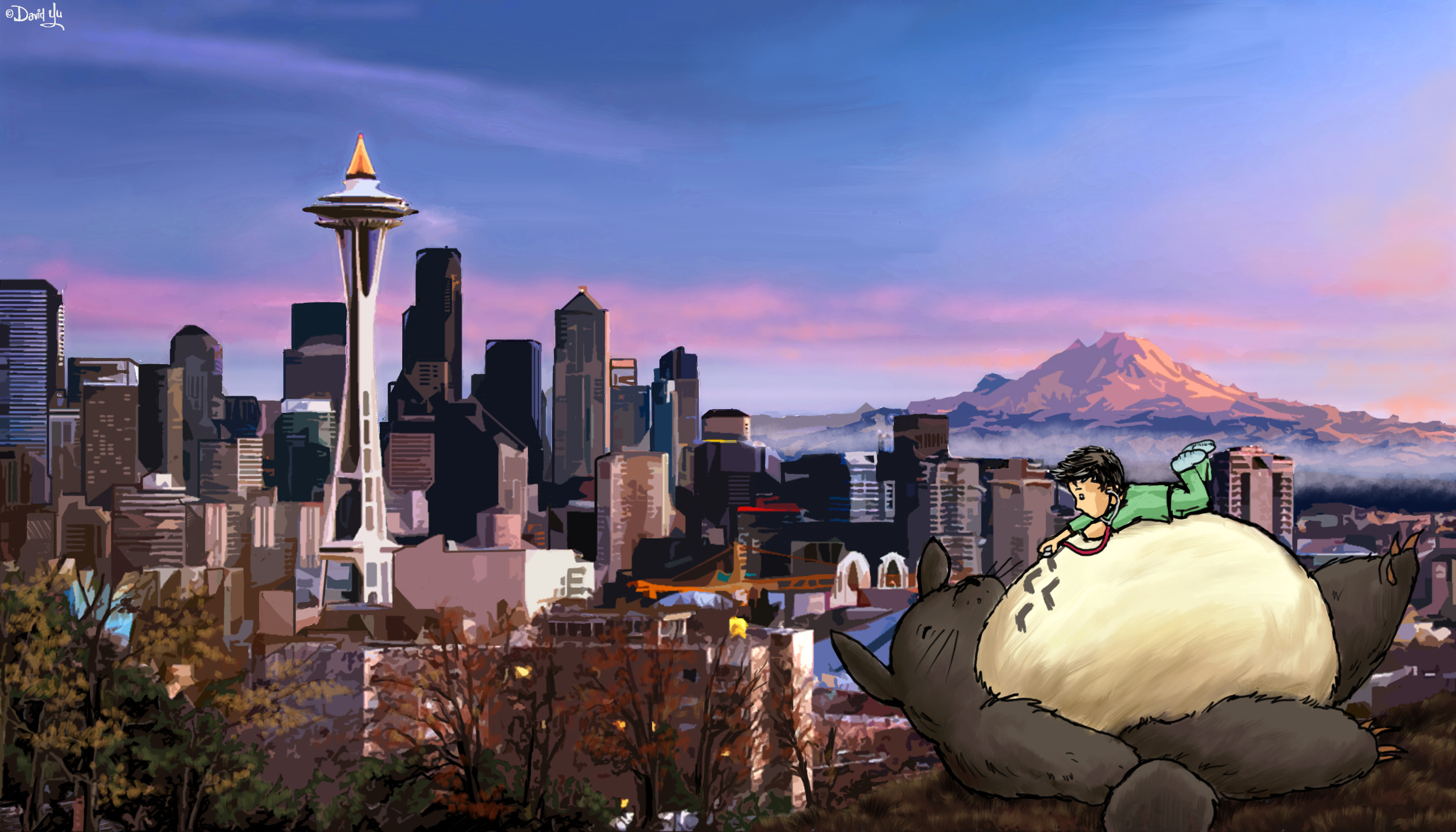Totoro
David Yu (2016)
digital illustration
Author’s note: The accompanying image features Totoro, one of my favorite childhood cartoons, in the beautiful city of Seattle, where the University of Washington is located.
I tilted the overhead lamp and reached for a fresh blade. My gown was stained from hours of work on the woman’s arm; I continued to scrape, dab and blot. This, however, was not surgery. I was finishing my final project for a college figure painting class. My fingers were smeared with paint, not blood, and I held a palette knife, not a scalpel. Nevertheless, I had spent hours of sweaty concentration at the studio, not unlike that needed every day on wards — as the human body is notoriously challenging either to portray in art or to treat in medicine.
I wanted to be an artist long before I wanted to become a doctor. While my classmates were going through the fireman, astronaut or paleontologist stage (okay, so I also had an astronaut stage), I wanted to be an animator for Disney-Pixar. This was the golden age of Saturday morning cartoons — Recess, Scooby Doo, Looney Tunes, all of which I tried to emulate on whatever scrap/non-scrap (I recall the occasional bank document) of paper was lying around. This hobby carried forth into school, where I drew charming versions of the classmates and teachers whose company I enjoyed and unflattering renditions of those I did not.
Now, years later, I still find surprising parallels in how I approach art and patient care. Like medical records, I (begrudgingly) transitioned from paper to electronic as my medium of choice. While scrawling with a pen or brush on paper still feels nostalgic and is handy in a pinch, a digital platform (consisting of a drawing tablet connected to a laptop with illustration software) was much more practical. I had begun commission and publication work in college, and the ability to seamlessly make edits, fill out large swathes of color with a single click and having that all-important “Ctrl+Z” undo function was essential to getting projects done on time. I could pull up old works for reference and organize them into logical, hierarchical databases instead of boxes of papers filling up my room. To my surprise, I didn’t enjoy “cookie cutter” commission work very much, and found myself always looking for projects where I had the most artistic leeway. In a way, this is what drew me to medicine — while standard guidelines exist for treating most medical problems, the physician has full reign to adjust his or her approach in accordance to the patient’s specific anatomy, disease course and history.
Digital art today — whether in the form of animation, comic books or concept art — centers more on portraying a subject in a creative and engaging way for the audience to appreciate rather than as a manifesto of the artist’s own ego for the audience to interpret. While my personal style and quirks are apparent in each piece I create, they play supporting roles in creating a piece of work that makes people laugh, nod in understanding, or just gaze with curiosity. My aforementioned figure drawing has long been finished and spray-sealed, but I have many years of practice ahead of me in medicine. Just as my experience managing and understanding human disease will change, so too will my style and technique in art — I’m excited to see where both will lead me.



